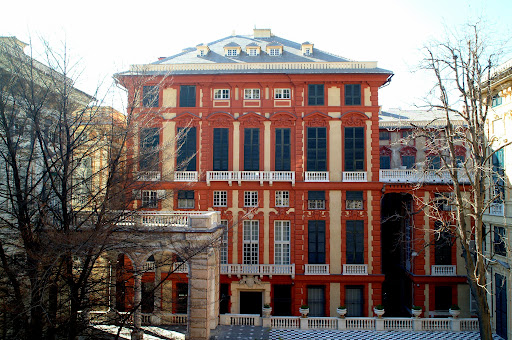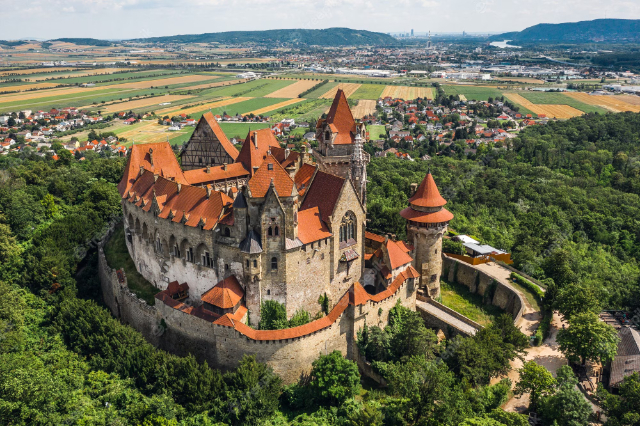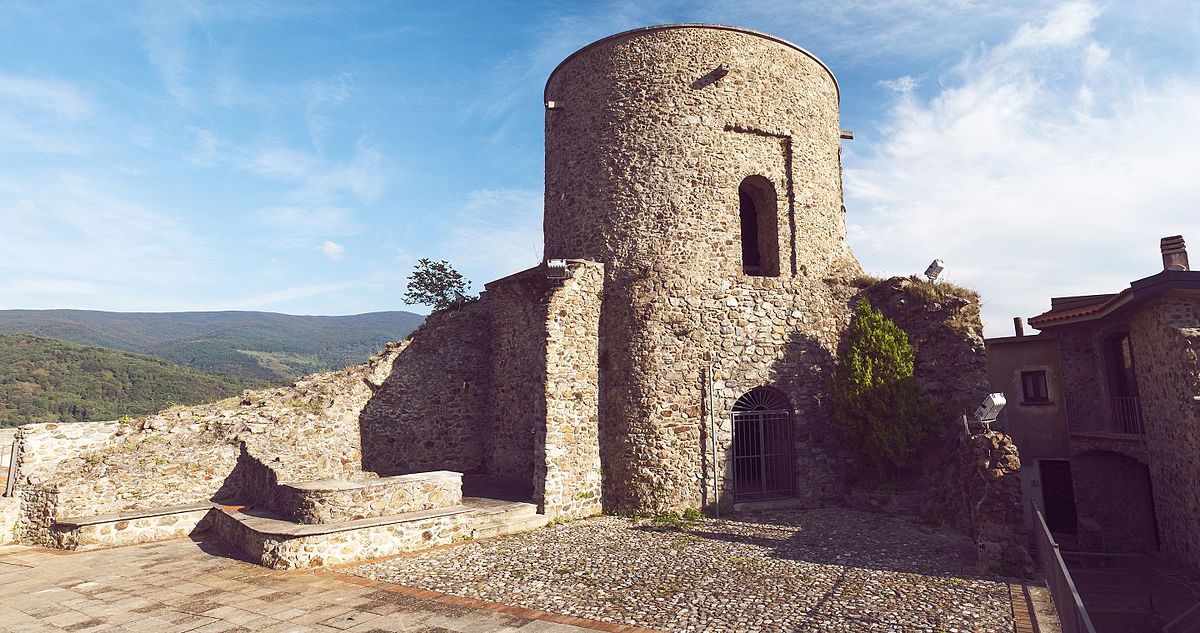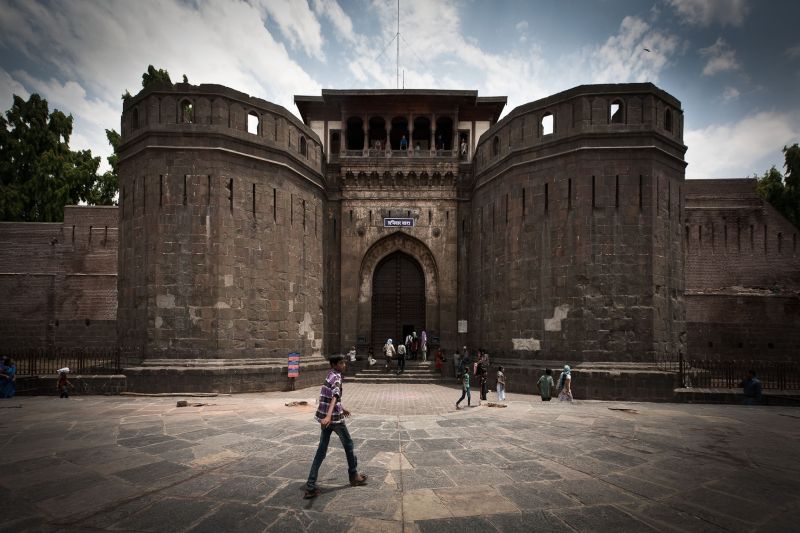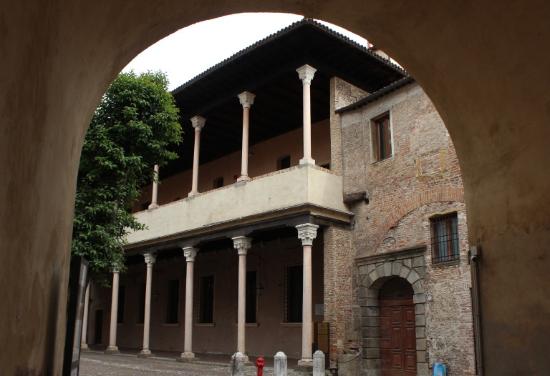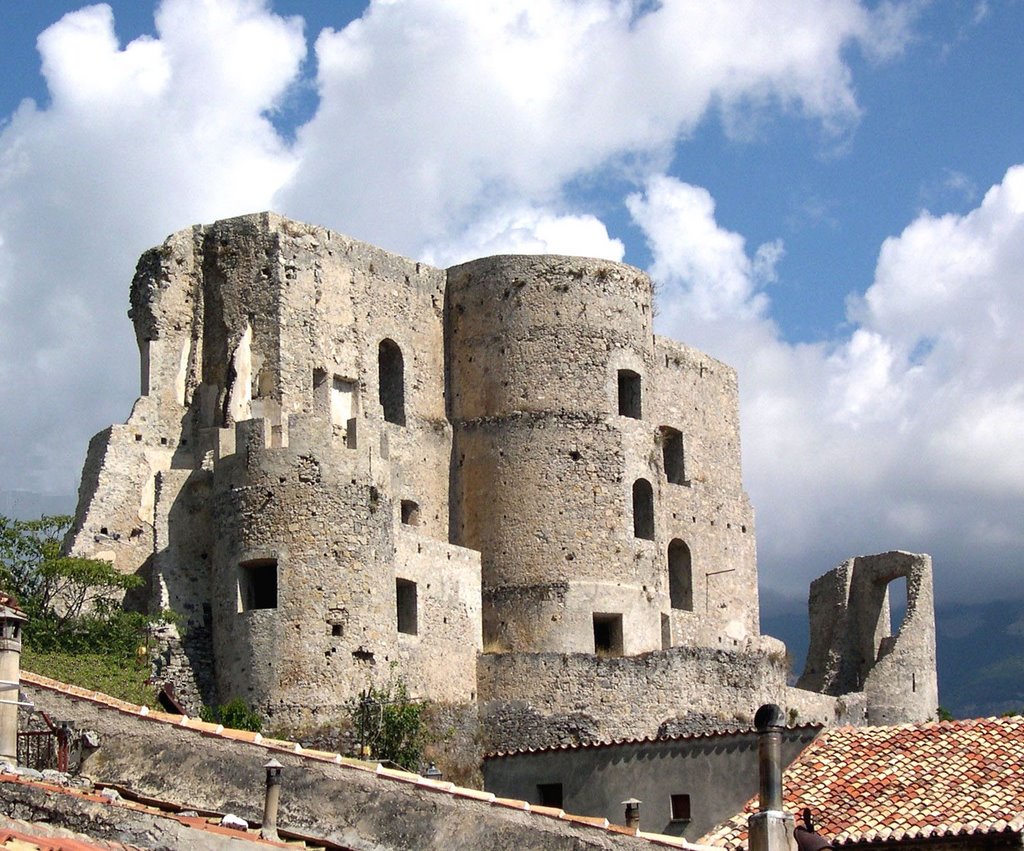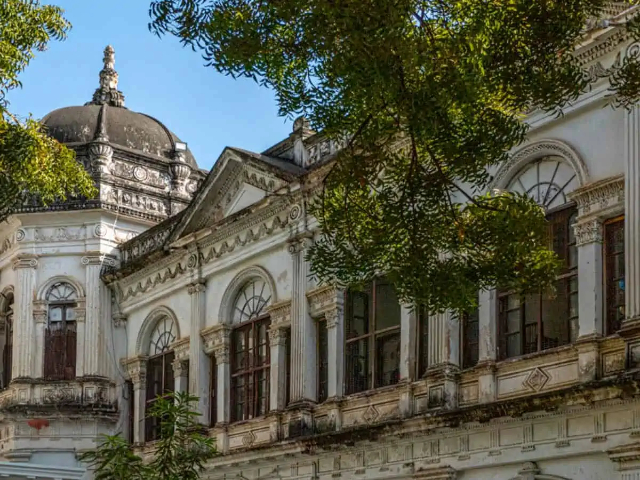The construction of Palazzo Rosso took place between 1671 and 1677. The paternity of the building is attributable to the architect Pietro Antonio Corradi, while the building site and the works were directed by Matteo Lagomaggiore. The building is set on a U-shaped plan, derived from the typologies applied by Bartolomeo Bianco: the two wings are joined by loggias that define the square-plan inner courtyard. Each of the two noble floors has the usual layout, with the loggia and the salon in an axial position, and a row of rooms on either side. Ridolfo Maria, the eldest son, was given the second piano nobile, Gio.Francesco the first, but in 1683 Ridolfo died without male heirs and his brother, having become the sole owner, moved to the second piano nobile, bought back the portraits of his parents from his niece Paola, wife of Carlo Spinola, and began the fresco decoration along the rooms of the second piano nobile, laying the groundwork for its extension beyond the east wing – completed at his death – to all the other rooms of the ammezzi. The artists who, between 1679 and 1694, participated in this first decorative intervention were Domenico Piola (1627-1703) and Gregorio De Ferrari (1647-1726) and, later, Paolo Gerolamo Piola (1666-1724), assisted by the quadraturists and stucco decorators. At the end of this first intervention, the Salone was decorated, with the perspectives on the walls by the Bolognese Gio.Enrico and Antonio Haffner, and the fresco on the vault, a masterpiece by Gregorio De Ferrari, unfortunately destroyed by the bombings of the last war; four rooms to the east, each with subjects inspired by a season of the year, and finally the loggia, to which, on the occasion of these interventions, the arches were closed, transforming it into a small gallery, where Codazzi painted the fake ruins and Paolo Gerolamo Piola the subjects of the myth of Diana and Endymion.
In the spring of 1691 a second decorative phase began, which in the space of a year involved the four rooms on the west side: the room of the Life of Man and that of the Liberal Arts were frescoed by Gio.Andrea Carlone (1639-1697) with the help of Antonio Haffner for the quadratures on the walls of the second room, which open onto Landscapes by Carlo Antonio Tavella (1668-1738); the alcove room – which now partly presents later decorations – was again frescoed by Gio.Andrea Carlone and his brother Nicolò; the last room was entirely by Bartolomeo Guidobono (1654-1709), whose Fucina di Vulcano on the vault was unfortunately lost and replaced in 1736 by Domenico Parodi’s Gioventù in cimento.
Restoration and completion of the decorations continued until the mid-19th century and, at the same time, the Brignole-Sale collection grew in quality and number of works. A few years after Gio Francesco’s death, it was enriched by an important contribution from his father-in-law Giuseppe Maria Durazzo.
Continuing the artistic patronage of Gio Francesco I was his nephew Gio.Francesco II (1695-1760), who commissioned the architect Francesco Cantone to decorate the façade of Palazzo Rosso and the adjoining Palazzetto, which in 1746 took on its present appearance, characterised by the characteristic lion protomes that mark the architraves of the windows on the two piano nobili, with precise reference to the heraldic arms of the Brignole family, depicting a lion rampant under a plum tree (in Genoese dialect "brignole").
The diplomatic mission carried out in Paris between 1737 and 1739 gave Gio Francesco II the opportunity to appreciate the Regency style then prevailing: he commissioned the portraits of himself and his wife to the king’s painter, Rigaud, and in Genoa he wanted to renew rooms and furnishings according to the new fashion.
The decoration by Lorenzo De Ferrari, Gregory’s son, in the first room of the so-called dependencies of the palace is also part of this programme. This policy of artistic magnificence was crowned in 1746 by the election of Gio Francesco II as Doge of the Republic of Genoa.
New interventions, consisting in the construction of a new apartment in the so-called mezzarie superiori, located above the second piano nobile, date from around 1783, when Anton Giulio II (1764-1802) married a lively and cultured member of the Sienese aristocracy: Anna Pieri. Unfortunately, the series of rooms in question, whose subjects were inspired by vaguely Enlightenment themes and whose ornamental motifs were somewhere between Louis XVI style and proto-Neoclassicism, were largely destroyed during the bombings of the last war.
Even before the mid-nineteenth century, when the palace belonged to Antonio Brignole – Sale, the floors were redone in precious polychrome marble. Antonio’s eldest daughter, Maria, better known in Genoa as the Duchess of Galliera, coheir of Palazzo Rosso on the death of her father, obtained the entire usufruct on the death of her sister, and since her son Filippo, born to Marquis Raffaele De Ferrari, showed no inclination to take an interest in the heritage and traditions of the two families from which he descended, in January 1874 he decided to donate Palazzo Rosso to his city to "increase the decorum and usefulness" of Genoa and, at the same time, with the evident idea of making the building a true monument to the Brignole – Sale lineage.
